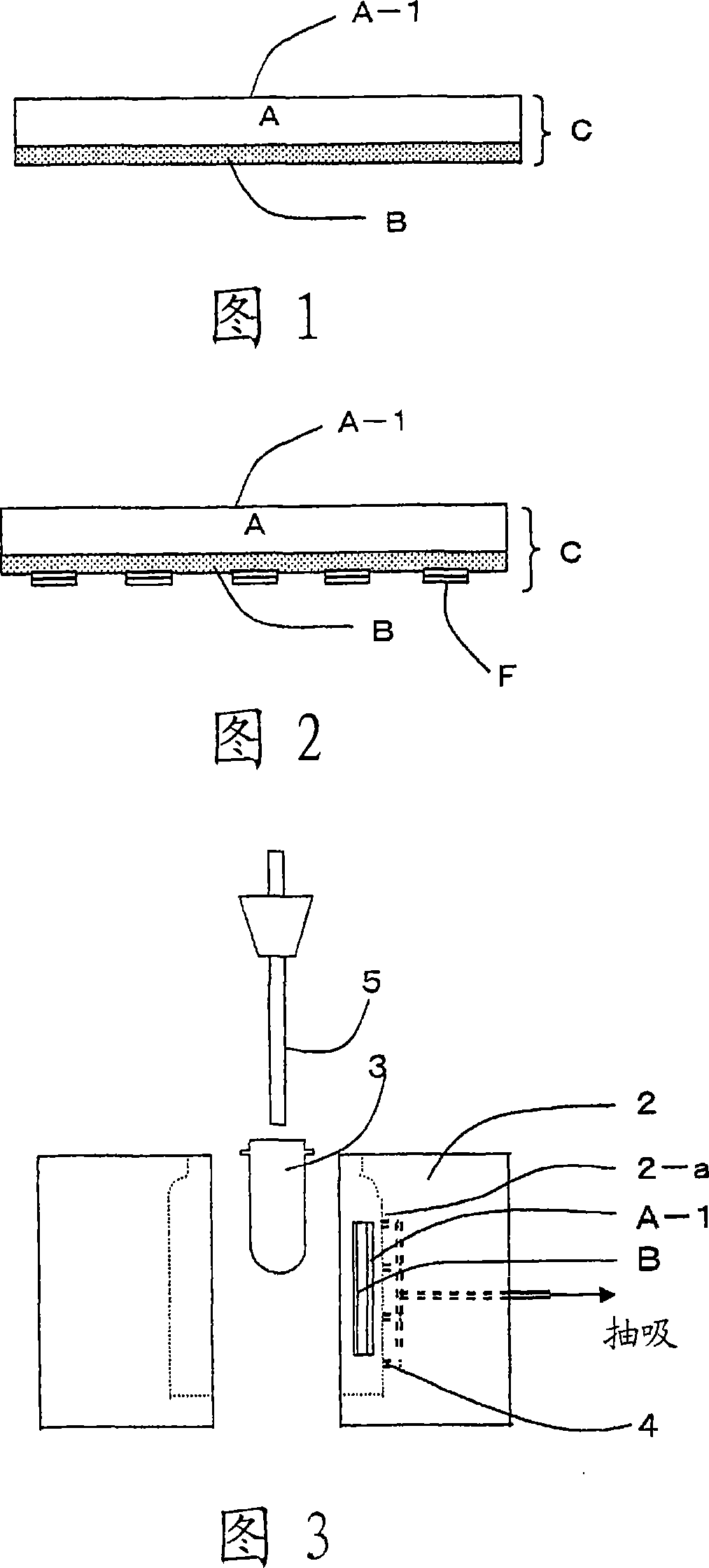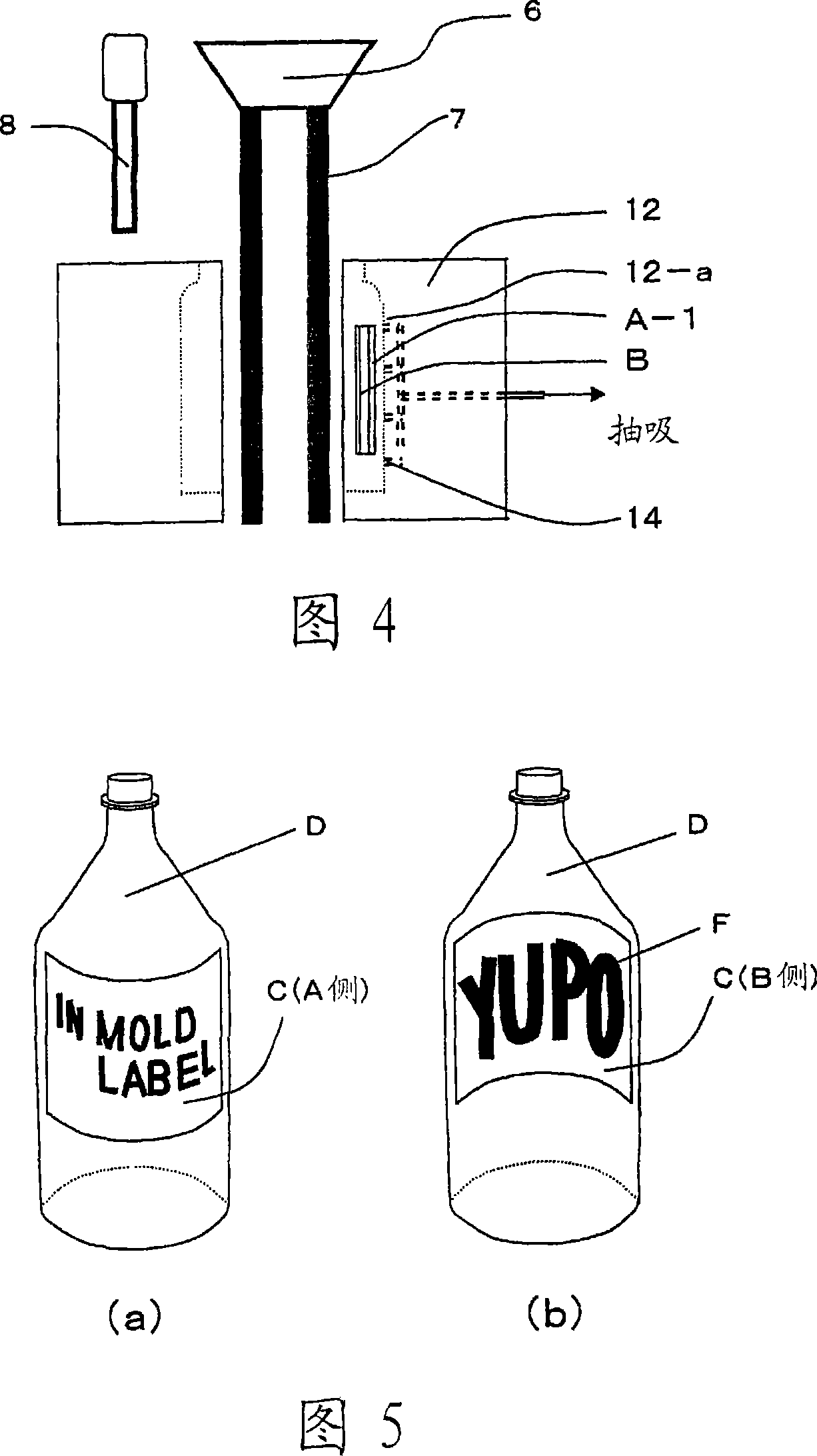Labeled molded object obtained by in-mold labeling and in-mold label
An in-mold forming and labeling technology, applied in synthetic resin layered products, instruments, layered products, etc., can solve the problems of labels falling off and not being able to be reused.
- Summary
- Abstract
- Description
- Claims
- Application Information
AI Technical Summary
Problems solved by technology
Method used
Image
Examples
Embodiment
[0078] Examples, comparative examples, and test examples are given below to describe the present invention in more detail.
[0079] The materials, amount, ratio, operation, etc. shown below can be appropriately modified within the scope not exceeding the spirit of the present invention. Therefore, the scope of the present invention is not limited to the specific examples shown below.
[0080] Table 1 summarizes the resin compositions used in the production examples of the present invention.
[0081] Table 1
[0082] Material name
preparation example 1
[0083] (Preparation Example 1) Preparation of surface treatment agent
[0084] In a reactor equipped with a reflux condenser, a thermometer, a dropping funnel, a stirring device and a gas introduction pipe, 500 parts by weight of diallylamine hydrochloride (60% by weight aqueous solution) and 13 parts by weight of acrylamide ( 40% by weight aqueous solution) and 40 parts by weight of water, and the temperature in the system was increased to 80°C while being filled with nitrogen. Under stirring, 30 parts by weight of the polymerization initiator ammonium persulfate (aqueous solution with a concentration of 25% by weight) was added dropwise over 4 hours through a dropping funnel. After the dropping, the reaction was continued for 1 hour to obtain a viscous light yellow liquid. Take 50 g of this liquid substance and pour it into 500 ml of acetone to produce a white precipitate. The precipitate was filtered and thoroughly washed twice with 100 ml of acetone, and then vacuum dried to o...
manufacture example 1
[0088] (Manufacturing example 1) Manufacturing 1 of base layer A
[0089]After kneading the thermoplastic resin composition a with an extruder set at 230°C, it is supplied to an extrusion die set at 250°C, extruded into a sheet shape, and then cooled by a cooling device to obtain the product No stretch film. The unstretched sheet was heated to 140°C and stretched 4 times in the longitudinal direction. After kneading the thermoplastic resin c with an extruder set at 250°C, it was extruded into a sheet, and then laminated on the back side of the above-mentioned 4-fold stretched film. In addition, the thermoplastic resin composition d was set at 250 After kneading in an extruder at ℃, extruded into a sheet shape, and then laminated on the surface of the above-mentioned 4-fold stretched film to obtain a laminated film with a three-layer structure. Then, the laminated film of the three-layer structure was cooled to 60°C, heated again to about 140°C using a tenter dryer, and stretched 1...
PUM
| Property | Measurement | Unit |
|---|---|---|
| Melting point | aaaaa | aaaaa |
| Density | aaaaa | aaaaa |
| Melting point | aaaaa | aaaaa |
Abstract
Description
Claims
Application Information
 Login to View More
Login to View More - R&D
- Intellectual Property
- Life Sciences
- Materials
- Tech Scout
- Unparalleled Data Quality
- Higher Quality Content
- 60% Fewer Hallucinations
Browse by: Latest US Patents, China's latest patents, Technical Efficacy Thesaurus, Application Domain, Technology Topic, Popular Technical Reports.
© 2025 PatSnap. All rights reserved.Legal|Privacy policy|Modern Slavery Act Transparency Statement|Sitemap|About US| Contact US: help@patsnap.com


